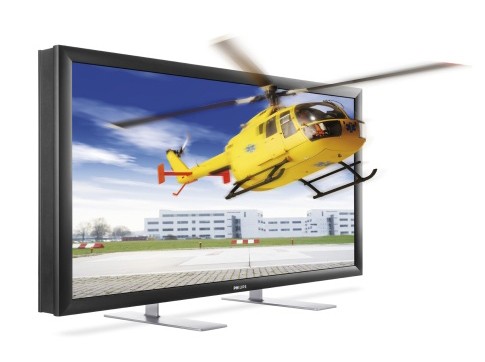
In march 2011 LG has launched its range of “flicker-free” Cinema 3D TV globally, claiming that passive 3D TV is going to transform the TV industry. On the other hand Panasonic, Samsung and Sony tout the benefits of Full HD 3D TV with their active 3D glasses that deliver full high definition (1080p) images to each eye. Who's right in this format dispute? For those who don't know the difference between passive and active 3D let's take a brief look at both.
Active 3D technology lies in creating 3D effect through incorporation in the 3D glasses, rather than in the 3D TV set. The active “shutter” glasses require their own source of power to rapidly open and close each lens. 3D TV set displays the images for each eye switching them synchronously with the lenses opening and closing for each eye. Nowadays active 3D TV is considered to be the most popular type of 3D TV due to economics: 3D TV set costs moderately low while the cost of special 3D glasses can rise up to $200. The reason it's economical to release active based 3D TV is because it is relatively easy for a 3D TV to switch images very rapidly. However, high price of the active “shutter” glasses is not conducive for family viewing.
Passive 3D technology is the same technology used in 3D cinemas. 3D TV is watched in this case with Real D glasses, which use circularly polarized light to produce stereoscopic image projection. In other words, passive 3D TV creates a bit different left and right eye images by polarizing the left and right eye image's light output in different directions. To the naked eye a passive 3D TV in 3D mode will look blurry, because you are seeing the left and the right eye images on screen at the same time. Using passive 3D glasses like Real D ones will filter the light properly so that your both eyes will see their respective images and your brain will create a 3D image out of that. So those 3D glasses you get in 3D cinemas will normally do for passive 3D TVs at home.
Active 3D TV has its main benefit of providing the highest possible detail of viewing while advantage of passive 3D TV lies in inexpensive passive 3D glasses. But which format is better? We think it's all about the consumer's choice, because both approaches to 3D are valid and widely spread. Moreover, both types of 3D TVs will perfectly work in 2D mode. So when you'll decide to have your home 3D cinema we recommend you first to read the reviews and then decide which benefits of each type are more attractive for you.
If you haven't made up your mind yet whether you'd like buying 3D TV as an alternative you can try special software to experience 3D yourself! To convert any video to HQ 3D format you can use powerful Video to 3D Converter - get your free trial version now. You can also watch any format video in glorious 3D with 3D Video Player instantly. Try it for free!
| Get your social on: |
|
Tweet |
|
||
Read Next -> 3D Media Revolution or How 3D video goes social
<- Back to 3D Media Revolution Blog
